Here’s the English translation:
Welcome to a journey through the treasures of Fuerteventura! Get ready to discover ten breathtaking places on this paradise island. Remember, as we explore these magical spots, our mission is to preserve their natural beauty.
- Take your trash with you and pick up any litter you see
- Stay on marked trails
- Do not feed wild animals (goats, donkeys, etc., you can unknowingly kill them or cause serious health problems)
- Don’t drive like a maniac, this is a peaceful island, absorb the tranquility
- Respect the locals, their silence, their rest, people live here year-round
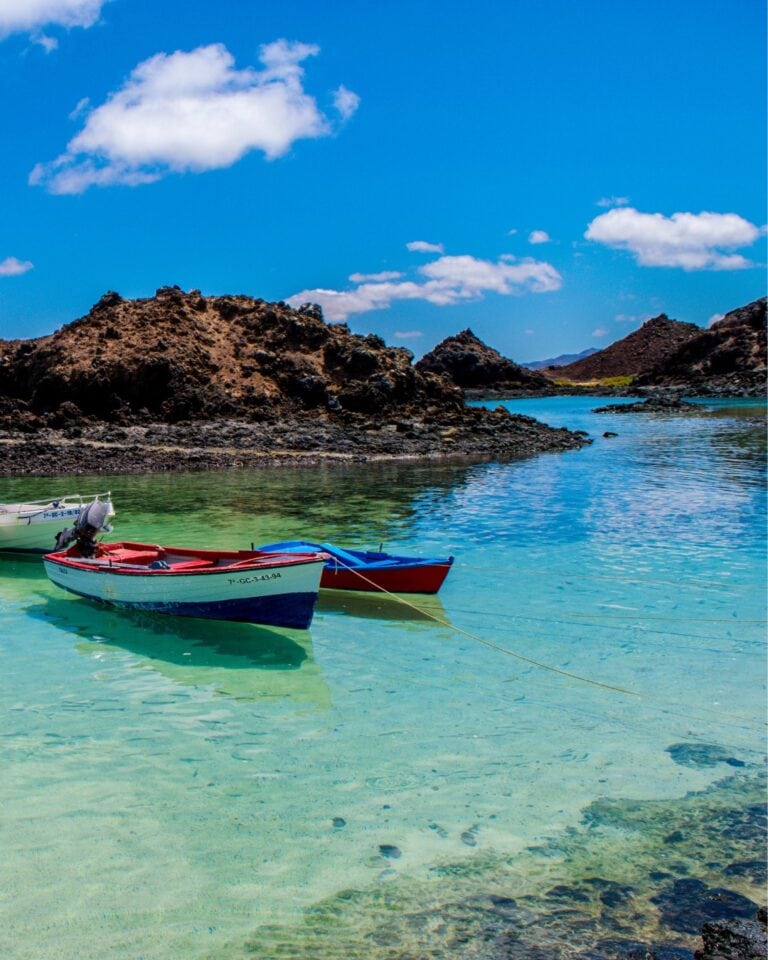
1. Lobos Island
A short boat ride from Corralejo leads to Isla de Lobos, named after the monk seals (sea wolves) that once inhabited the island. Today, the island welcomes visitors with its crystal-clear waters and rich biodiversity, making it one of the most incredible and special places in Fuerteventura.
- Stay on Marked Trails: This helps protect the delicate ecosystems and ensures that visitors enjoy the natural beauty without causing harm.
- Take Your Trash Home: Visitors are encouraged to carry out any waste they generate to maintain the island’s pristine environment

2. Corralejo's Dunes
We continue our journey in the north with the spectacular Corralejo Dunes. This natural park offers a unique landscape where the desert meets the ocean. Park your vehicle in the designated areas, otherwise you’ll find yourself buried in the sand and having to call who knows who to help you get out.
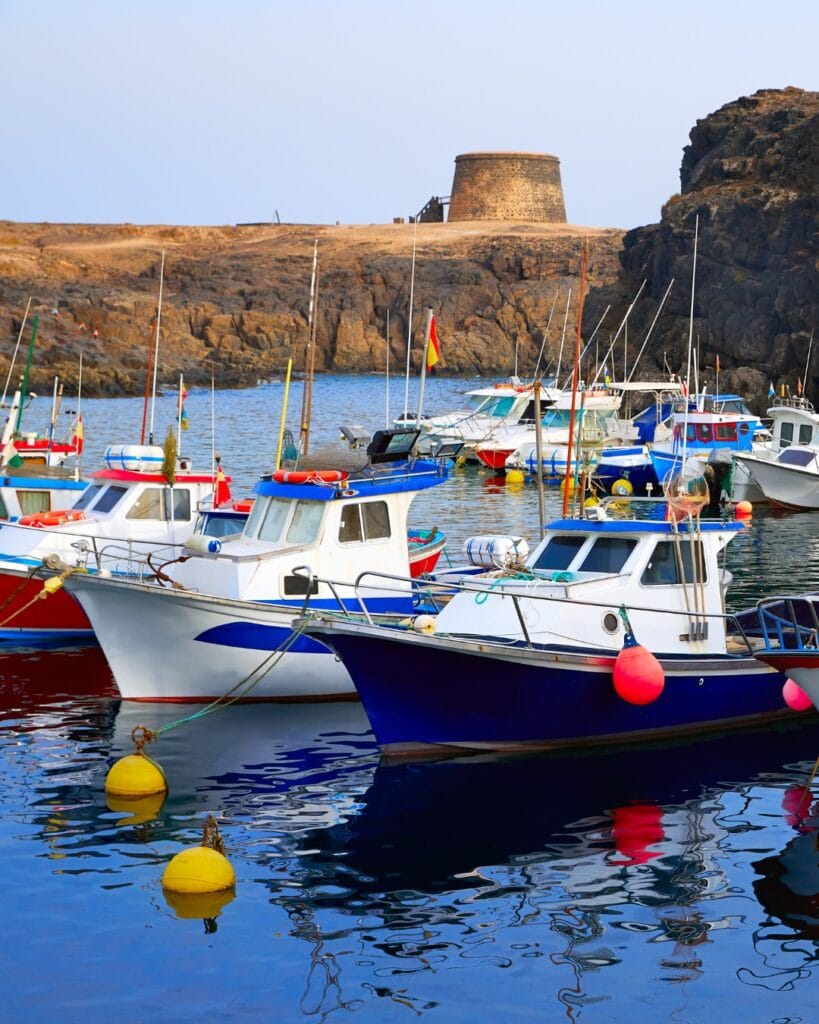
3. El Cotillo
This picturesque village in the northwest of the island offers impressive views and the opportunity to try several restaurants with incredible views and food. Visit La Concha Beach, the old little port, and the village’s narrow streets. There is also a good variety of shops with local and special items for you to take home as a souvenir.
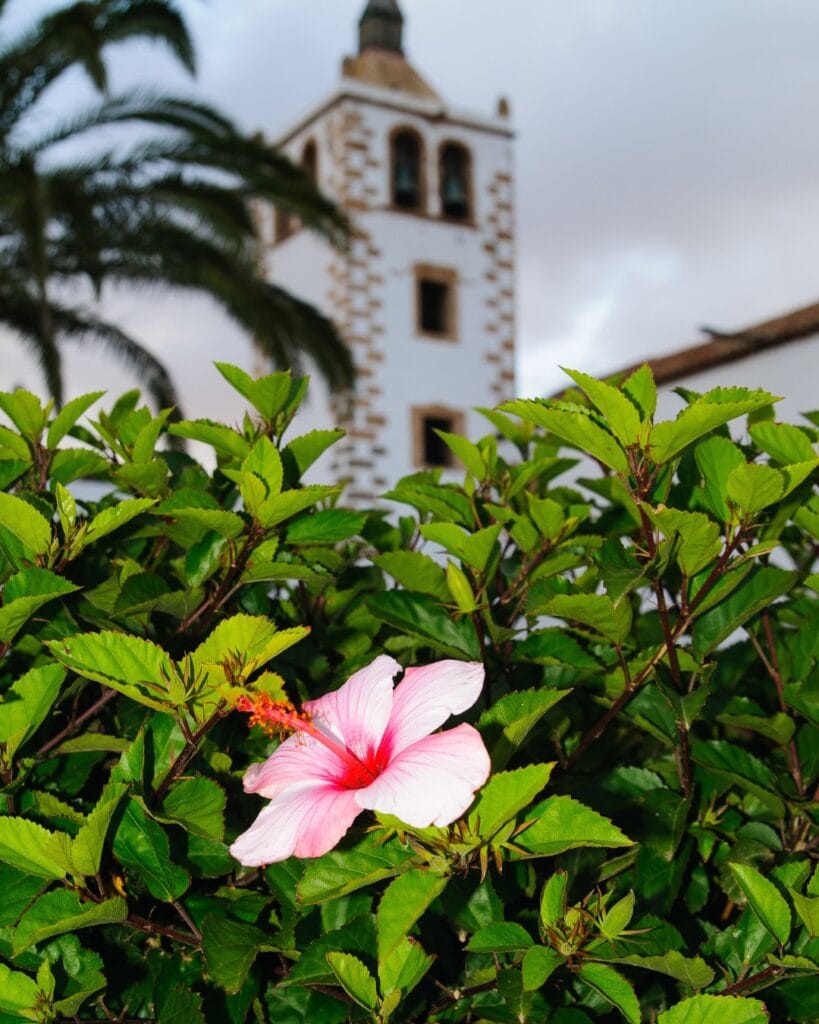
4. Betacuria: the prettiest town in Spain
As the historic capital of the Canary Islands, Betancuria will transport you to another era. It is one of the best-preserved Canarian villages in Fuerteventura. Founded in 1404, Betancuria has been recognized as one of the most beautiful villages in Spain since 2020. Here you can also find several restaurants where you can enjoy the island’s cuisine. Visit the church of Santa María de Betancuría, built in 1410 (did you know that in 1593, the church was destroyed during a pirate attack that also devastated much of the town?). Here you can also visit the Archaeological Museum of Betancuría, which houses treasures from Fuerteventura’s history.
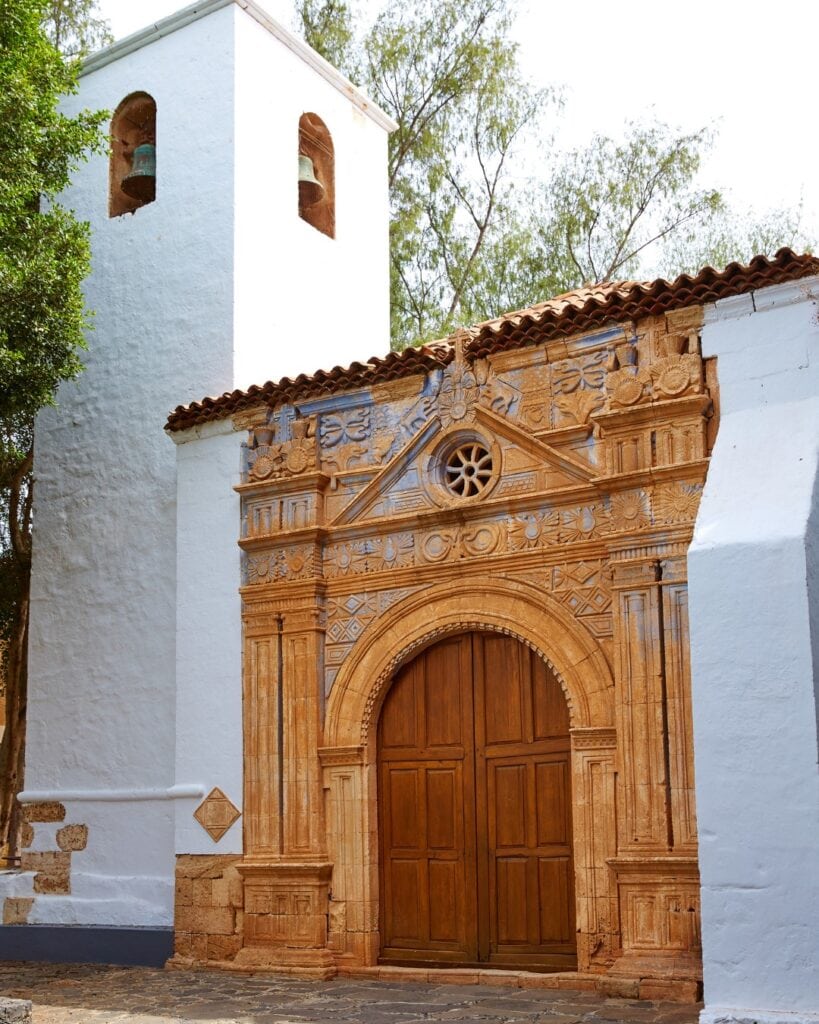
6. Pájara and its church
The Church of Our Lady of Regla in Pájara is an architectural gem, famous for its extraordinary 17th-century facade.
Its decoration is a paradigm of Canarian architecture. Made of reddish stonework, the facade features numerous decorative elements, including geometric figures, serpents, suns, moons, and human heads with feathered headdresses, which have led some to associate it with influences from Aztec art. The church houses several items of historical and cultural interest, such as altarpieces, sculptures, and paintings, reflecting the rich history and popular devotion of the place.

6. Ajuy Caves
Important things not to do here:Urinate before starting your walk to the caves in a designated place, the caves are not a bathroom.
Don’t take the stones away, if everyone does the same…Journey to the Center of the Earth.
These impressive geological formations offer a glimpse into the island’s history. The caves are part of the Ajuy Natural Monument, declared in 1987.It will take you 15 to 25 minutes walking calmly and enjoying the views. To reach the caves, you have to go down stairs with a recommended slope, and to exit, you’ll have to climb them, so it’s advisable to wear good footwear and be sure of your personal physical condition.
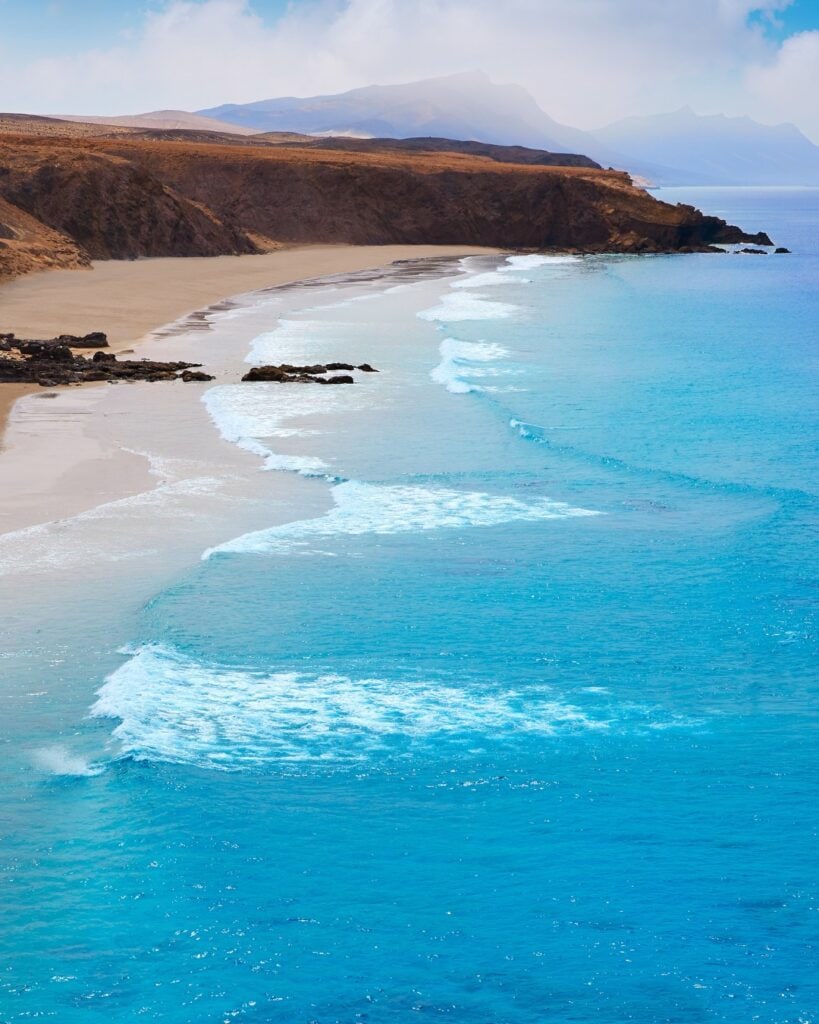
8. La Pared Beach
One of the most beautiful places on the island to watch the sunset. It’s important to check the tides, as if you want to go down to the beach, you won’t be able to access the bottom of the beach during high tide.Known for its spectacular sunsets, this wild beach is perfect for surf enthusiasts when the wind isn’t too strong. It’s ideal for experienced surfers, and along the shore, you’ll find countless surf schools.
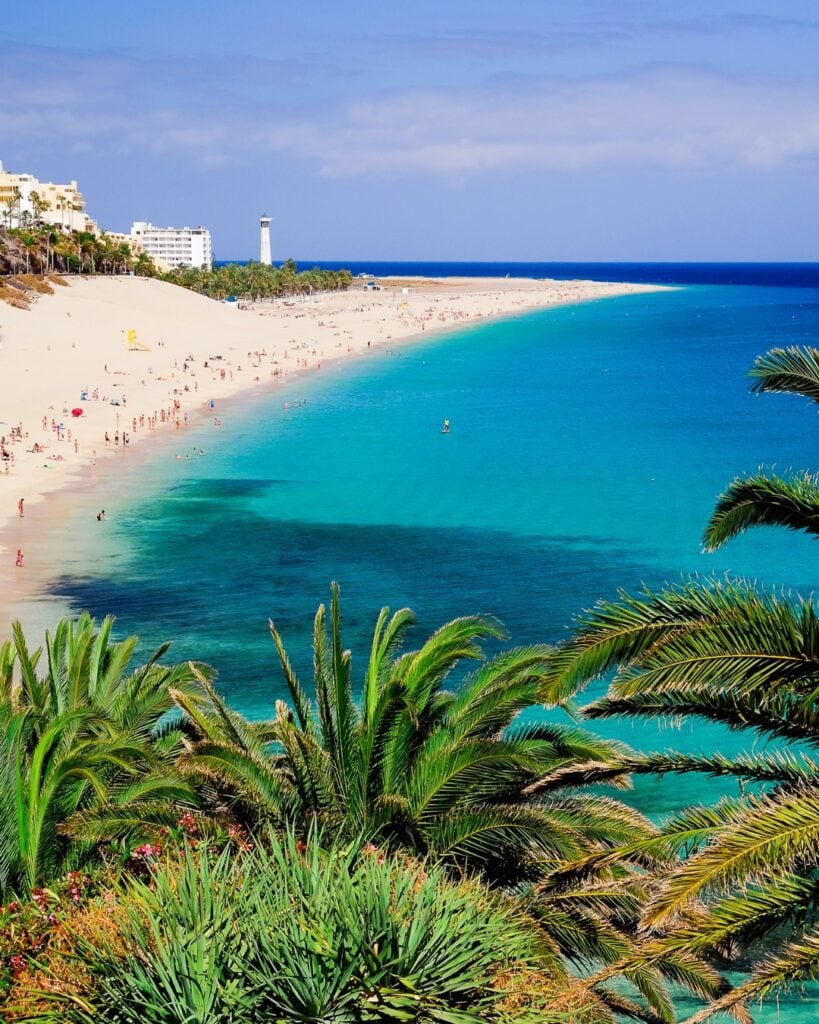
8. Jandía beaches & Morro Jable
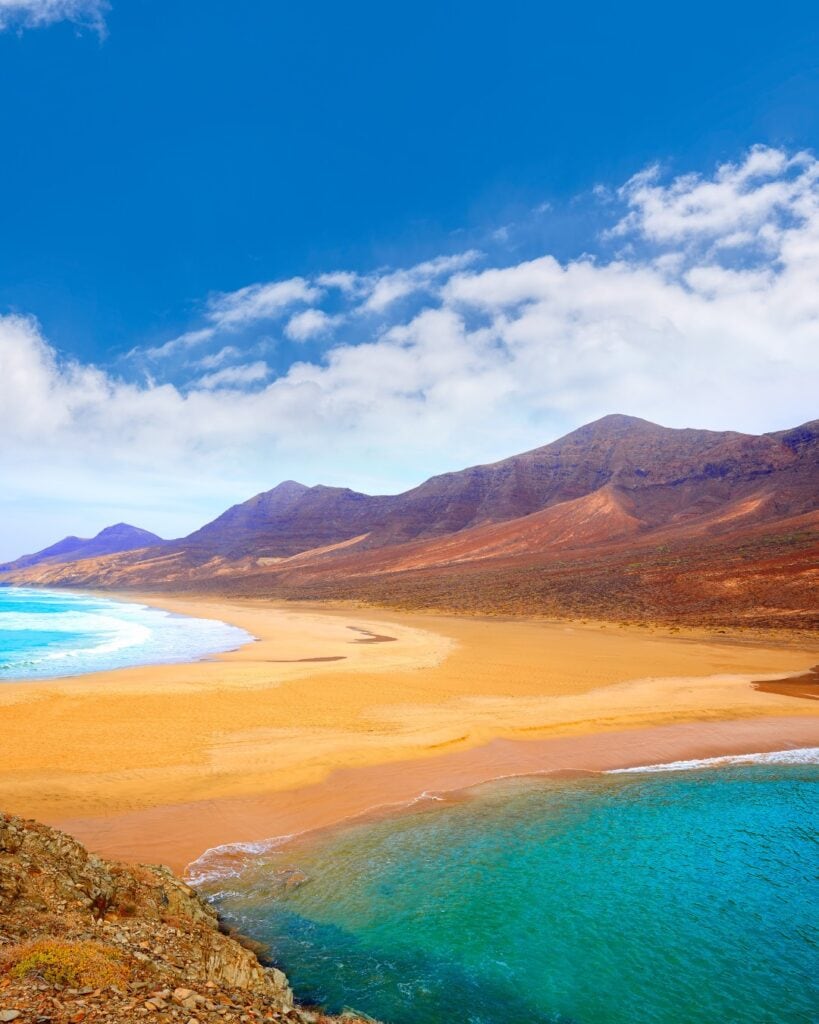
9. Cofete
One of the most impressive and unspoiled beaches in Europe, Cofete will leave you speechless.
There’s a small restaurant where you can enjoy typical dishes from the island. Please be very careful when swimming on these beaches as the currents are very strong and there’s no lifeguard supervision.
Additionally, in this “village,” you can find the famous and mysterious “Casa Winter.”Casa Winter, located on the remote Cofete beach in Fuerteventura, is the subject of numerous legends and conspiracy theories linking it to Nazi activities during World War II. Built in 1946 by German engineer Gustav Winter, the mansion has been a source of speculation about its true purpose. Among the most intriguing theories is the supposed existence of underground tunnels connecting the house to the ocean, allowing secret access for German submarines. It’s also rumored that the property had a hidden landing strip and served as an escape point for high-ranking Nazi officials fleeing to South America. Although these claims lack conclusive evidence, the presence of a Krupp wagon and old rails near the house, as well as testimonies of explosions in the area, have fueled for decades the mystery surrounding this enigmatic construction in one of the most inhospitable places on the island. The donkeys of Cofete are partly wild, remember: don’t feed them. Their natural diet is crucial for their well-being.
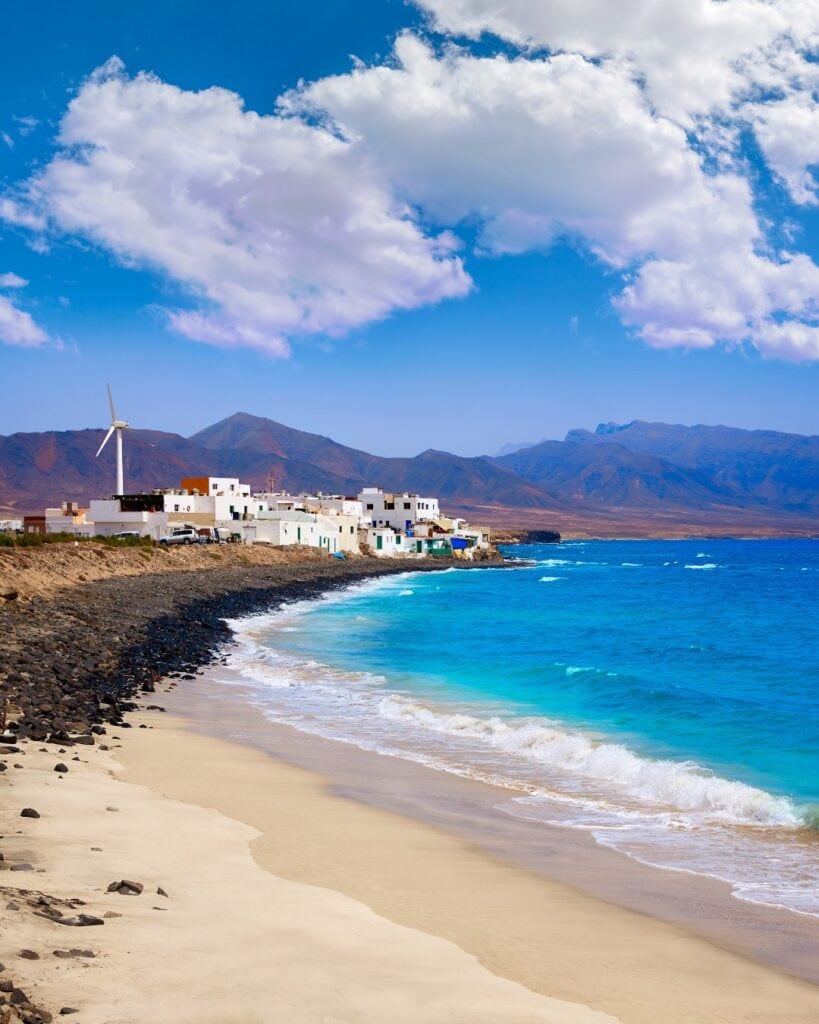
10. Punta de Jandía
Also known as “El Puertito de La Cruz,” it’s the place where I spent my childhood summers. It’s like being at the end of the world. The road to get here has many curves and is unpaved.There are some restaurants where you can enjoy Canarian cuisine. I highly recommend that you enjoy a good fish broth for two and a “gofio escaldado” (a traditional Canarian dish made with toasted grain flour).Visit the two lighthouses in this area, the small beach… With a population of barely 40 inhabitants, this small enclave has maintained its original character over time, largely resisting the tourist development that has transformed other parts of the island. Its isolation and difficulty of access, which involves traveling more than 20 kilometers of dirt road from Morro del Jable, have contributed to preserving its authenticity and charm as an idyllic corner of Fuerteventura.

